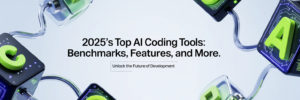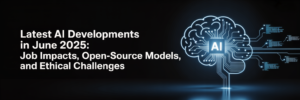In the rapidly evolving world of software development, AI is becoming an indispensable tool for enhancing productivity and creativity. One of the most promising advancements in this space is the Model Context Protocol (MCP), an open standard developed by Anthropic that enables seamless integration between AI models and external tools, data sources, and systems. For UI/UX developers, MCP servers offer a transformative approach to design workflows, making processes more efficient, scalable, and innovative.
Understanding MCP and Its Role in AI Integration
MCP is a protocol that standardizes communication between large language models (LLMs) and external systems, such as content repositories, business tools, and development environments. By using JSON-based queries, AI agents can interact with MCP servers to access tools and data sources, enabling two-way communication. This standardization simplifies the integration of AI into various workflows, making it easier for developers to connect AI with the tools they use daily.
For UI/UX developers, MCP is particularly valuable because it reduces the need for custom API integrations. Instead, developers can leverage pre-built MCP servers that are compatible with a wide range of systems, including popular design tools like Figma. This not only saves time but also makes the integration process more scalable and maintainable.
How MCP Servers Benefit UI/UX Developers
MCP servers provide several key advantages for UI/UX developers:
- Standardized Integration: MCP offers a universal language for AI to interact with different tools, eliminating the complexity of custom integrations. This allows developers to focus on designing intuitive user interfaces rather than backend challenges.
- Modular Tools: By breaking software into modular, on-demand tools, MCP enables developers to build more flexible and dynamic interfaces. This modularity is especially useful in UI/UX design, where components need to be reusable and adaptable across projects.
- Seamless User Interactions: MCP supports the concept of a single UI for all software, where users can interact with technology through conversational interfaces. This aligns with modern UI/UX trends toward more natural and intuitive user experiences.
- Access to External Data and Tools: MCP servers can connect to a variety of external data sources and tools, providing UI/UX developers with real-time data and functionalities that can be incorporated into their designs.
A practical example of how MCP is being used in UI/UX development is the MCP-Stack-for-UI-UX-Designers, a suite of specialized MCP servers designed specifically for UI/UX professionals.
Exploring the MCP-Stack-for-UI-UX-Designers
The MCP-Stack-for-UI-UX-Designers is an end-to-end solution that streamlines the entire UI/UX design workflow, from gathering inspiration to handing off designs to developers, by integrating multiple AI-assisted tools. Below is a detailed look at its key components:
| Component | Function | Benefits for UI/UX Developers |
|---|---|---|
| inspire-mcp | Downloads and analyzes existing websites for UI/UX inspiration, capturing HTML with inline CSS and resources, and uses AI to analyze design patterns and components. | Saves time by identifying trends and best practices, sparking creativity for new designs. |
| design-mcp | Integrates with Figma via its API, enabling extraction, creation, or updating of designs in readonly or write modes. | Enhances collaboration and efficiency by allowing AI-assisted design creation and updates in Figma. |
| handoff-mcp | Converts Figma designs into React components, generating TypeScript code with Tailwind CSS classes and accessibility attributes. | Facilitates smooth handoff to developers, reducing implementation time and ensuring accessibility. |
inspire-mcp: Fueling Design Inspiration
The inspire-mcp tool allows designers to analyze existing websites to gather UI/UX inspiration. By capturing complete HTML content with inline CSS and resources, it uses AI to identify design patterns and components. This helps designers quickly understand current trends and best practices, enabling them to create more informed and innovative designs.
design-mcp: Streamlining Figma Workflows
Integrated with Figma, the design-mcp server enables direct interaction with Figma designs through its API. Designers can extract design information, create new designs, or update existing ones, working in either readonly or write modes. This AI-assisted integration enhances collaboration and efficiency, allowing designers to focus on creativity while automating repetitive tasks.
handoff-mcp: Bridging Design and Development
The handoff-mcp tool converts Figma designs directly into React components, generating TypeScript code with Tailwind CSS classes. It also adds accessibility attributes, ensuring that designs are user-friendly for all. This streamlines the handoff process from designers to developers, reducing the time and effort needed for implementation.
By using these tools, UI/UX developers can automate repetitive tasks, gain insights from existing designs, and create more efficient workflows. The MCP-Stack-for-UI-UX-Designers demonstrates how MCP can be leveraged to enhance the entire design process.
MCP in the Context of Minecraft
While MCP is a general protocol, it has specific applications in gaming environments like Minecraft. For instance, the Minecraft MCP Server, powered by the Mineflayer API, allows AI agents to control Minecraft characters in real-time (Minecraft MCP Server). This can be particularly useful for UI/UX developers working on Minecraft mods or add-ons, as it enables testing of AI-driven interfaces within the game. For example, developers can design and test conversational UIs that allow players to interact with the game through natural language instructions, enhancing the user experience.
Additionally, the @minecraft/server-ui module in Minecraft Bedrock Edition provides tools for creating dialog-based user experiences, such as action forms and modal forms (Minecraft Server UI). While not directly related to MCP servers, this module highlights the potential for UI/UX development within Minecraft, which can be further enhanced by MCP’s AI integration capabilities.
Future of UI/UX with MCP
The adoption of MCP is growing rapidly, with over 1,000 community-built servers available and support from major players like OpenAI and Google (UX Magazine). This expanding ecosystem is fostering a new era of agent interoperability, where AI agents can seamlessly interact with various tools and systems.
For UI/UX developers, this means the future of design could involve even more integrated and intelligent tools. MCP has the potential to reduce the need for multiple user interfaces, allowing users to interact with software through a single, conversational interface. This could significantly simplify user interactions and reduce cognitive load, a key goal in UI/UX design.
As MCP continues to evolve, we can expect to see more innovative applications in UI/UX development, further blurring the lines between human and machine interaction. The protocol’s compatibility with frameworks like LangChain and its adoption by early adopters like Block, Apollo, and Replit indicate a promising future for AI-assisted design workflows.
Conclusion
Model Context Protocol (MCP) servers are revolutionizing the way UI/UX developers work by providing standardized, modular, and AI-assisted tools that streamline the design process. From gathering inspiration to handing off designs, MCP offers a comprehensive solution that enhances efficiency and creativity. Tools like the MCP-Stack-for-UI-UX-Designers and Minecraft-specific MCP servers demonstrate the protocol’s versatility in enhancing design workflows, both in general software development and gaming environments like Minecraft.
For UI/UX developers looking to stay ahead in this AI-driven era, exploring MCP and its applications is highly recommended. By leveraging these tools, developers can create more intuitive, accessible, and engaging user experiences, paving the way for the future of design.







Be First to Comment